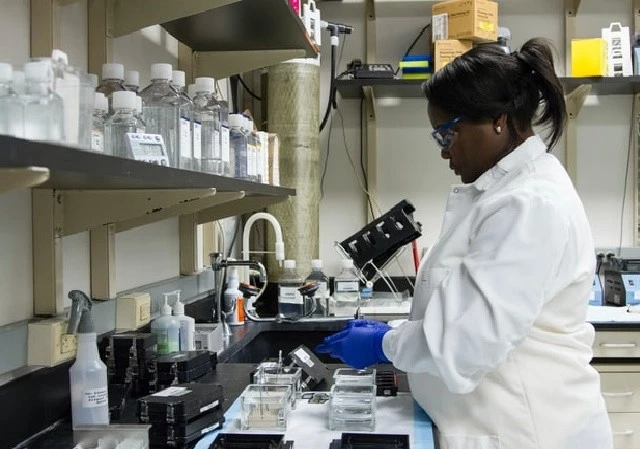How to plan for uncertainty while maximizing the efficiency of your clinical supply chain
Discover an innovative solution developed by N-SIDE to future-proof your end-to-end clinical supply chain using risk-based simulation and optimization techniques
Add bookmark
Supply chain uncertainty is a challenge every clinical supply chain manager wrestles with – stemming from increasing product demand and quality, the growing complexity of clinical trial designs and a lack of visibility in the supply chain. In addition, with the pressure to reduce drug waste and react quickly to study changes, implementing inadequate risk management policies can also impact clinical supply chain performance leading to budget increases and delayed timelines.
Sébastien Coppe, Life Sciences Director at N-SIDE, states: “Developing a better understanding of the elements causing supply chain uncertainty and risk remains a relevant issue in the current highly competitive environment of clinical trials. The current Covid-19 crisis brought further complexity and emphasized the need to establish precise decision-making processes.
"In challenging situations where uncertainty is even higher than for normal clinical trial supply chains, it is crucial to know where and when the drug needs to be supplied to the patient.”
In an effort to help pharma companies plan for uncertainty, manage risk and enhance communication by bridging the gap between multiple departments, this blog examines how to leverage advanced analytics optimization techniques using the N-SIDE Supply App as a solution to accurately assess uncertainty and maximize the efficiency of clinical trial supplies.
Accelerating your clinical trial supply through digitalization
The availability of new analytics tools and the expansion of data sources has led many pharma companies to adopt a data-driven approach to decision-making during the early stages of the clinical trial planning process.
In order for the pharma industry to wholeheartedly progress in its digital transformations efforts, however, organizations need to start adapting and changing their traditional ways of working to involve all stakeholders in the decision-making process from the very beginning. Implementing change management processes related to the clinical supply chain digitalization is a strategic move followed by multiple pharma organization over the last years. This ensures clinical supply chain managers are aligning their decisions with other stakeholders, for a stronger future in the IT-driven arena.
Coppe says: “N-SIDE has been providing solutions in optimization for 20 years now and the launch of the Supply App a couple of years ago is a critical step in helping clinical supply chain managers have access to the data and the necessary facts in real-time to be involved in discussions from the very beginning of a trial’s lifecycle.
“Thanks to the optimization techniques of the N-SIDE Supply App, supply chain managers can have a robust forecasting system in place to overcome challenges of uncertainty. This strong support in the digitalization process really increases service levels for patients while reducing the drug waste and supply budget to a minimal level.”
Maintaining optimization during clinical trial design
There are many parameters in clinical trial design that have a direct impact on the supply chain, and often, clinical decision-makers are not always aware of their effects. Coppe comments he is seeing a big change in how supply chains are being managed to control risk and reduce waste through enhanced data management technologies.
“The N-SIDE Supply App is one way you can easily manage your data and showcase the impact of your decisions. For example, it is not always easy to manufacture exactly what you need for a clinical trial so we need to be efficient and lean in our decision-making to ensure the supply chain does not reach a bottleneck or produce too much waste,” Coppe notes.
With digital analytic tools playing an ever-increasing role in pharmaceutical workflow processes and expanding product value, data management is quickly becoming a standard practice for improving supply chain management and decision-making – as AstraZeneca found in an initiative to centralize their clinical supply chain management, supported by advanced analytics.
In addition, with the Covid-19 situation bringing further uncertainty to clinical supply chains, leveraging advanced analytics solutions to turn data into actionable insights is becoming more important.
Coppe declares: “Having a great communication platform in place while the majority of your workforce is working remotely will not only enhance your digitalization projects but will also enforce data exchange visualization for faster, more knowledgeable business decisions.”
Achieving clinical supply chain flexibility now and in the future
When you have a lot of uncertainty and multiple stakeholders involved in the clinical trial supply, it can be difficult to understand where to keep the flexibility. Do you want to keep more inventories within your downstream supply chain at site or local depot level? Alternatively, do you want to keep flexibility more at the manufacturing level?
Coppe says: “Questions around supply chain flexibility are often difficult to answer correctly, so you have to be able to efficiently align all the different needs of stakeholders to achieve end-to-end success, for both the program and its related studies. This is where risk-based optimization tools, such as the N-SIDE Supply App comes in to play. It provides everyone with the right facts in real-time to assess the impact of different decisions and best balance the flexibility for every stakeholder.
“In addition, I see simulation and advanced analytics optimization techniques providing pharma organizations with a way to challenge the current timelines related to pharmaceutical research and development processes – we are already seeing this with Covid-19 related treatments,” Coppe adds. “I predict digital simulations tools will propel the pharma industry into a new way of working across the entire clinical trial supply chain.”
Discover the N-SIDE Supply App to achieve greater flexibility in your end-to-end supply chain and ensure your clinical supply chain does not come to a bottleneck in the face of uncertainty. Find out how to design, plan and monitor your clinical supply chain strategy to deliver medicines to the patient on time while reducing drug waste and minimizing trial costs.
Learn more about the N-SIDE Supply App



























